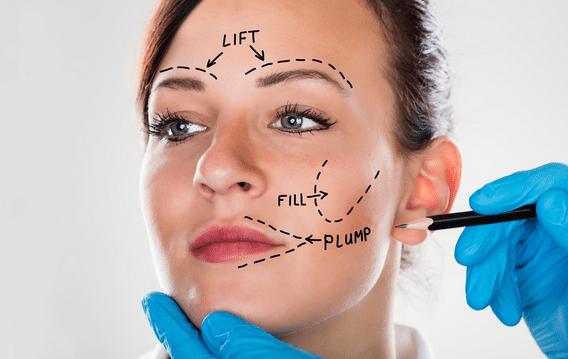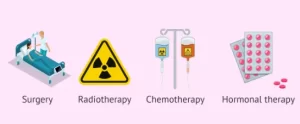The appearance of the cheeks plays a crucial role in defining the overall harmony and balance of the face. As we age, the cheeks may lose volume and sag, resulting in a tired or aged look. A cheek lift, also known as a mid-face lift or cheek rejuvenation, is a cosmetic procedure that addresses these concerns.
What Can a Cheek Lift Do?
A cheek lift is a surgical procedure designed to lift and reposition the cheeks, restoring volume and enhancing facial contours. This procedure can address various aesthetic concerns, such as:
- Sagging Cheeks: A cheek lift can elevate the sagging cheeks, providing a more youthful and lifted appearance.
- Volume Loss: With aging, the cheeks may lose volume. A cheek lift can restore lost volume and create a fuller and more youthful look.
- Deep Nasolabial Folds: The procedure can help diminish deep lines that extend from the nose to the corners of the mouth, known as nasolabial folds.
- Marionette Lines: Cheek lift surgery can also improve the appearance of marionette lines, which are the vertical lines that form from the corners of the mouth to the chin.
- Facial Contouring: A lift can enhance facial contours by lifting and repositioning the cheeks, creating a more defined and balanced appearance.
Different Types of Cheek Lift
Several techniques are available for performing a cheek lift, and the choice depends on the patient’s specific concerns. Some common types of cheek lift procedures include:
- Traditional Cheek Lift: This procedure involves making incisions along the hairline or inside the mouth to access the underlying cheek fat and tissues. The surgeon then lifts and repositions the cheeks before securing them in their new position.
- Mid-face Lift: A mid-face lift targets the middle portion of the face, including the cheeks and the area below the lower eyelids. It provides a comprehensive rejuvenation by lifting and repositioning the sagging tissues in this region.
- Thread Lift: A thread lift is a less invasive option that involves inserting dissolvable sutures or threads into the cheeks to lift and reposition the sagging tissues. The threads provide immediate lift and stimulate collagen production for long-term results.
A cheek lift can enhance and restore facial contours
How Cheek Lift Surgery Gets Done Step by Step
this surgery follows a series of steps to achieve the desired results. Although the specific techniques may vary depending on the individual and surgeon’s preference, the general process involves:
- Anesthesia: The surgeon administers either general anesthesia or local anesthesia with sedation to ensure the patient’s comfort throughout the procedure.
- Incisions: The surgeon carefully makes incisions, which may be hidden within the hairline, along the natural creases of the face, or inside the mouth.
- Tissue Repositioning: The underlying cheek fat pads and tissues are gently repositioned and lifted to restore volume and improve contours.
- Excess Skin Removal: If necessary, any excess skin is trimmed to create a more taut and youthful appearance.
- Incision Closure: The incisions are meticulously closed using sutures or other appropriate techniques.
- Recovery: The patient is closely monitored in a recovery area to ensure their well-being and to manage any immediate post-surgical discomfort or swelling.
The results of a cheek lift are long-lasting
Benefits of Cheek Lift
this surgery procedure offers numerous benefits for individuals seeking facial rejuvenation and enhancement. Some of the key advantages include:
- Restored Facial Contours: A cheek lift can enhance and restore facial contours, creating a more defined and youthful appearance.
- Lifted Cheeks: Sagging cheeks can be lifted and repositioned to achieve a more lifted and rejuvenated look.
- Improved Facial Harmony: By addressing the mid-face region, a lift can improve overall facial harmony and balance.
- Reduced Nasolabial Folds: The procedure can significantly diminish the appearance of deep nasolabial folds, resulting in a smoother and more youthful appearance.
- Softened Marionette Lines: Cheek lift surgery can help soften marionette lines, reducing their prominence and contributing to a youthful appearance.
- Enhanced Cheek Volume: A cheek lift can restore lost cheek volume, providing a fuller and more youthful contour to the face.
- Long-lasting Results: The results of a lift are long-lasting, allowing individuals to enjoy their rejuvenated appearance for years to come.
- Boost in Self-confidence: Improved facial aesthetics can enhance self-esteem and boost overall self-confidence.
- Customizable Procedure: this surgery can be tailored to meet each patient’s unique needs and desired outcomes, ensuring personalized treatment.
- Complementary with Other Procedures: A cheek lift can be combined with other cosmetic procedures, such as eyelid surgery or facelifts, to achieve comprehensive facial rejuvenation.
According to Dr Julian :
How long a cheek lift lasts depends on many factors. For one, it depends on how you maintain the results after the surgery. It also depends on your lifestyle and other health habits.
6 Risks of Cheek Lift
A cheek lift carries certain risks and potential complications like any surgical procedure. It is important to be aware of these risks, which may include:
- Infection: Although rare, infections can occur at the surgical site and require appropriate medical intervention.
- Bleeding: Excessive bleeding during or after the surgery is a potential risk that may require additional treatment or intervention.
Recovery Time from Cheek Lift
The recovery period after a cheek lift varies depending on the individual’s healing ability and the extent of the procedure. Generally, the following aspects are common during the recovery phase:
- Swelling and Bruising: Swelling and bruising are expected after the surgery but gradually subside over a few weeks.
- Pain Management: Discomfort and pain can be managed with prescribed medications provided by the surgeon.
If you desire to rejuvenate your cheeks, a cheek lift or mid-face lift may be the solution you’re looking for to achieve a more youthful and revitalized look.
What Age Can Get a Cheek Lift?
Generally, lift procedures are suitable for individuals in their 40s to 60s who exhibit signs of facial aging, including sagging cheeks and loss of volume. However, there is no strict age limit, and some individuals in their 70s or older may still benefit from a lift.
To-Do and Not-To-Do Things After a Lift
To optimize the healing process and ensure the best possible results following a cheek lift, it is crucial to adhere to the post-operative instructions provided by the surgeon. Some common recommendations include:
To-Do:
- Follow the prescribed medication schedule for pain management and prevent infection.
- Keep the surgical incisions clean and dry as per the surgeon’s instructions.
Not-To-Do:
- Do not engage in activities that can put pressure on the face or cause trauma to the surgical area.
- Avoid smoking and alcohol consumption, as they can impede the healing process.
Following these guidelines will aid in a smooth recovery and enhance the effectiveness of the cheek lift procedure.
Summary
A cheek lift is a cosmetic procedure that can effectively lift and rejuvenate sagging cheeks, enhancing facial contours and restoring a more youthful appearance. With different cheek lift procedures available, individuals can choose the best approach that suits their needs.
While risks and potential complications exist, the benefits of a cheek lift, such as improved facial harmony, restored volume, and long-lasting results, often outweigh them.
FAQs
1. How long is the recovery after a cheek lift?
Recovery time varies, but swelling and bruising typically subside within a few weeks, with full results appearing in a few months.
2. What age is suitable for a lift?
Lifts are generally suitable for individuals in their 40s to 60s, but there is no strict age limit, and older individuals may still benefit.






